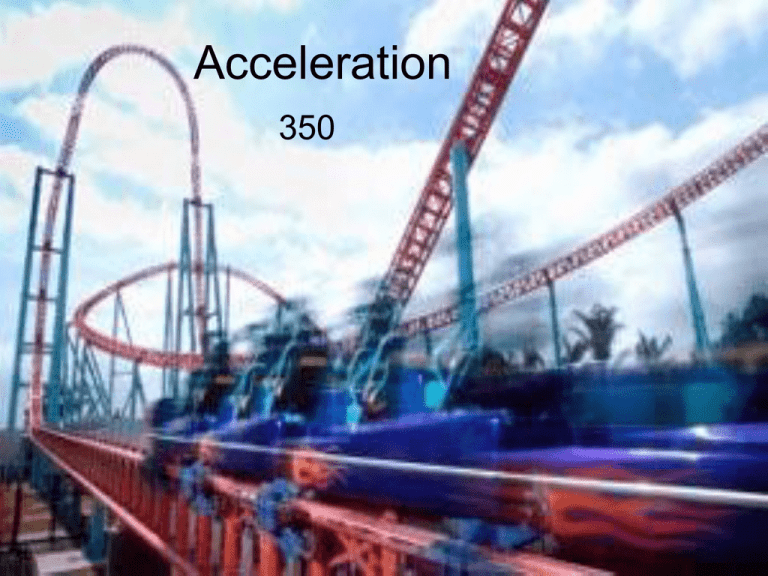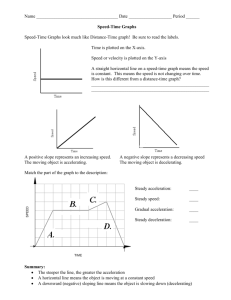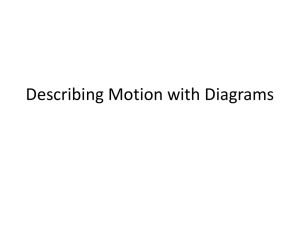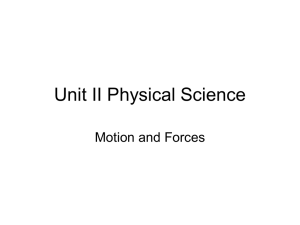Acceleration
advertisement

Acceleration 350 1. What is acceleration? • Our definition: the rate at which velocity changes. • A way of describing how fast something speeds up or slows down 2. What kind of motion does acceleration refer to? • Increasing speed • Decreasing speed • Changing direction or any change in velocity (speed and direction) • How can a car be accelerating if its speed is constant at 65 km/h? It can accelerate by changing direction! 3. How do you calculate acceleration? • You must calculate the change in velocity per unit of time. • Formula: 4. How is it expressed? • Usually meters per second per second • m/s/s or m/s2 5. Example: Calculate the plane’s acceleration after 5 seconds. Initial velocity = Final velocity = Time = = 40 m/s – 0 m/s 5s = 8 m/s2 6. Example: a car slows down from 60 m/s to 10 m/s in 10 seconds. What is its acceleration? a = 10 m/s – 60 m/s 10 s a = -50 m/s 10s a = -5 m/s/s or -5 m/s2 ACCELERATION FORMULA: 7. What is negative acceleration? • Slowing down or decelerating 8. How can you graph acceleration? • Speed versus time graph! • X-axis = time • Y-axis = speed Accelerating! • How would the slope of the graph change if the cyclist were accelerating at a greater rate? The slope would be steeper! • What about a lesser rate? The slope would be less steep 9. How can you interpret graphs of speed versus time? Speed is increasing Positive acceleration Speed Speed is decreasing Negative acceleration Speed Time (s) Speed remains the same Constant speed! Time (s) • Or by a distance versus time graph Xcelerator at Knott’s accelerates the passengers from 0 m/s to 38 m/s in 2.3 seconds. What is the acceleration? 10. What is the difference between a linear and nonlinear graph? • Linear = straight line • Nonlinear = not a straight line











